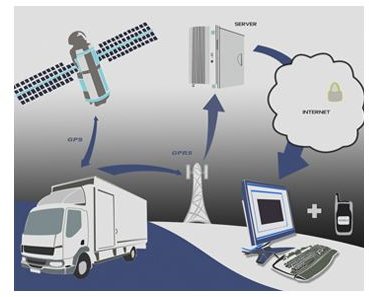Remote Security Alarm GPS - Help in Reducing Crime With GPS Security Deterrents
Remote Security Alarms GPS – An Overview
The basic concept of remote security alarm GPS devices is to offer real time information to the customer when a secured device is moved or disturbed. These systems use one or more GPS devices connected to the objects that are to be secured, and they are capable of sending messages to the customer’s cell phone as soon as the object is moved. These systems also help in tracking the whereabouts of the object after it is stolen.
Remote security alarm GPS devices can be placed into two basic categories: Roaming and Stationary. Roaming security alarm systems are generally used for securing vehicles, while remote stationary security alarm GPS systems are used to secure households, construction equipment, and warehouses, etc.
Note: The article assumes that you are aware of GPS basics and how GPS signals work.
Remote Security Alarms GPS for Vehicles
Roaming remote GPS security systems are used mostly for securing vehicles. (Sometimes, they are also used to secure kids and pets.)
Remote security alarm GPS devices trigger an alarm that is transmitted to the customer whenever the secured object is touched or moved by an unauthorized person. In the case of cars or any other vehicles, mini GPS anti-theft devices are installed in the vehicle. These anti theft GPS devices are small enough to hide anywhere in the vehicle. The receivers of these anti- theft GPS devices are capable of retrieving and interpreting data even from the faintest signal from satellites, which make them perfect for tracking the vehicle.
Normally, these anti theft GPS units are placed under the hood or anywhere else in a way that nothing blocks the signal reception. These anti theft GPS units are connected to transmitters that can send signals to some preset numbers stored in the latter as soon as the vehicle is touched by any unauthorized person. Sometimes, the alarm may also go off due to animals touching the vehicle.
The entire system is monitored by software that uses certain recognition features to understand who is accessing the vehicle. As soon as it is determined that the use is unauthorized, a signal can be transmitted to the customer’s cell phone. The customer may then lodge a complaint with the police and ask the GPS service provider to cooperate with officials in order to capture and retrieve the vehicle.
Note: Most modern day vehicles come with the anti-theft GPS devices preinstalled. These are monitored by the GPS service provider with whom the vehicle manufacturer has tie-ins. For example, OnCare is a GPS service provider that has a tie-in with General Motors. For vehicles that do not have anti-theft GPS, you may approach any of the GPS service providers in your area who take care of installation and monitoring your vehicle for some annual fee.
Stationary Remote Security Alarm GPS
Stationary remote security alarm GPS are used with objects that are stationary and vulnerable to thefts. Some examples are objects used at construction sites, dockyards, and warehouses. Using GPS security systems at such places helps in real time alerts and theft prevention. The objects most vulnerable to theft are fitted with a small GPS device which constantly tracks the position of the secured object. This device is connected to an alarm and a transmitter with capability to send signals to a few preset cell phone numbers. Even a small difference from the original position causes the anti-theft GPS device to sound an alarm.
The system has the provision of turning the anti-theft GPS device ON or OFF. You may turn it OFF when you are using the object and later turn it ON so that it stays protected. As soon as you turn it ON, the anti-theft GPS device notes the current coordinates. If anyone tries to move the object, the coordinates change causing the anti-theft GPS device to react. The sound of the alarm scares the person who leaves the place immediately without taking the object with him. Meanwhile, the transmitter sends messages to the preset numbers so that the users can check the object’s position on the cell phone itself.
Though in most cases, the person leaves the place without having the courage to take the object with himself, there are some cases when he may pick it up. The procedure to retrieve the stolen object is the same as explained in the above vehicular system.
With the increased popularity of the remote security alarm GPS, there has been a significant reduction in thefts adding one more feather in the cap of GPS that already holds an essential place in almost every field/aspect of one’s life.
This post is part of the series: Essentials of GPS
This series on GPS aims to offer you details on the essentials of GPS. It covers the GPS signal strength, measuring GPS accuracy, and factors that affect the GPS accuracy. Check these articles and feel free to ask further information on essentials of GPS.
- Enhancing the Code to Measure GPS Signal Strength – Essentials of GPS
- How GPS Satellite Detection Sensitivity Affects the Accuracy of GPS
- GPS Satellite Blackout: Overview, Reasons, and Results of GPS Blackout
- How GPS-Enabled Remote Security Alarms Work
- Cellphones, FM, Internet, and GPS – the Radio World in Communication and Broadcasting
